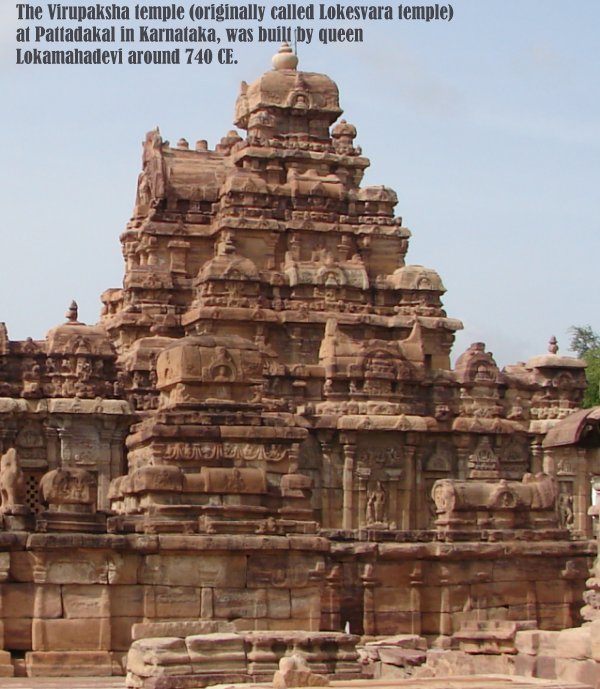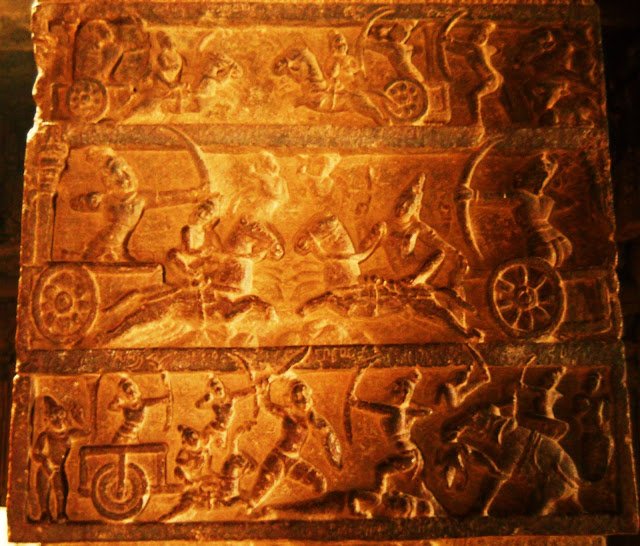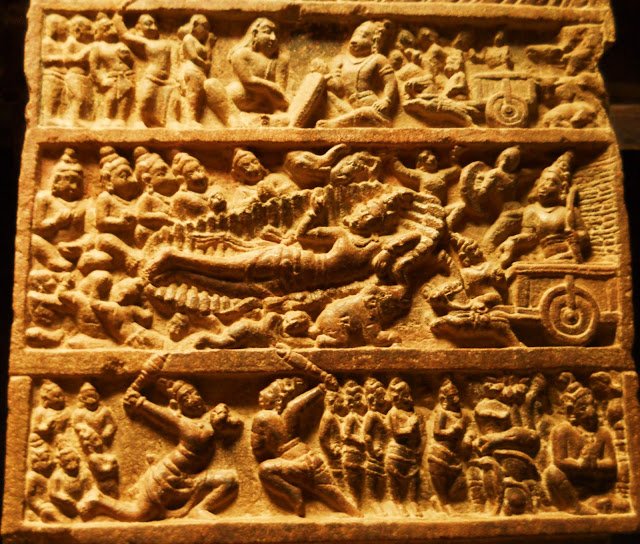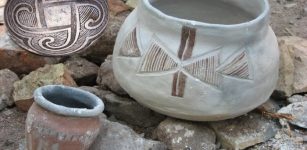Decoding Ancient Secrets Of Fascinating Virupaksha Temple
MessageToEagle.com – For 13 centuries, the Virupaksha Temple in Pattadakal has been one of the most recognizable landmarks in Indian art — a towering layer cake of elaborate, hand-carved friezes populated by a bevy of Hindu deities and symbols.
The temple (built in the 8th Century) is carved in stone, and its walls, pillars, panels and columns are decorated with beautiful carvings depicting episodes from Shiva’s life, different scenes from the Ramayana and the Mahabharata and scenes from Krishna’s childhood.
It is also believed that even the Kailasa Temple built in Ellora was based on the model of this Virupaksha temple.
However, these figures are more than just architectural decoration, according to Cathleen Cummings, Ph.D., an associate professor in the UAB Department of Art and Art History, who devoted more than decades to study this art.

Her discoveries identify images that glorify the king by referencing his family, conquests, and accomplishments, as well as other sculptural elements that offer religious guidance. Cummings describes one series of sequential inscriptions that depicts taking refuge in a deity, showing faith and then salvation.
Similar types of religious and royal imagery adorn centuries-old churches across the world, Cummings notes. “The idea of iconographic programs has been accepted in the context of Christian art for quite a long time.”
See also:
8 Remarkable Jain Temples – Marvelous Ancient Architecture And Stone Carvings
Masroor Temples – India’s Marvellous Ancient Cave Temples
Ajanta Caves: Incredible Accomplishment Of India’s Ancient Stonecutters
Cummings’s research on the temple also sheds new light on the important role that women played in ancient Indian politics and culture.
Queen Lokamahadevi, the chief wife of the king Vikramaditya II, led the construction of the temple to the Hindu god Shiva during the early Chalukya dynasty, around the year 733.

The queen wanted a temple “dedicated to the king’s reign and victory in wars with three other dynasties,” Cummings explains. Though women were part of the king’s inner circle, Cummings found the queen’s prominent placement in the temple’s iconography intriguing.
“Women have a very prominent role as temple patrons and probably also controlled resources much more than we tend to believe or know,” Cummings says.

“The dynasty that built Virupaksha was among the earliest to participate in the tradition of building large temples in stone,” she says. “This particular temple is the best preserved and probably the most elaborate one that they built.”
The builders didn’t leave many clues for Cummings to follow, however. Consequently, Cummings followed a scientific path, developing a hypothesis and following her instincts to find evidence to make her case. She pored over the placement of statues, studied Sanskrit inscriptions and ancient court documents from contemporary South Indian dynasties, investigated the temple’s rituals, and traveled to other Indian holy sites to build upon her findings.
“Apart from a few, very terse inscriptions on this and other Early Chalukya monuments, historians have not recovered much primary source documentation for this dynasty.”
The result of the studies is now part of Cummings’ book “Decoding a Hindu Temple: Royalty and Religion in the Iconographic Program of the Virupaksha Temple, Pattadakal”.
MessageToEagle.com










